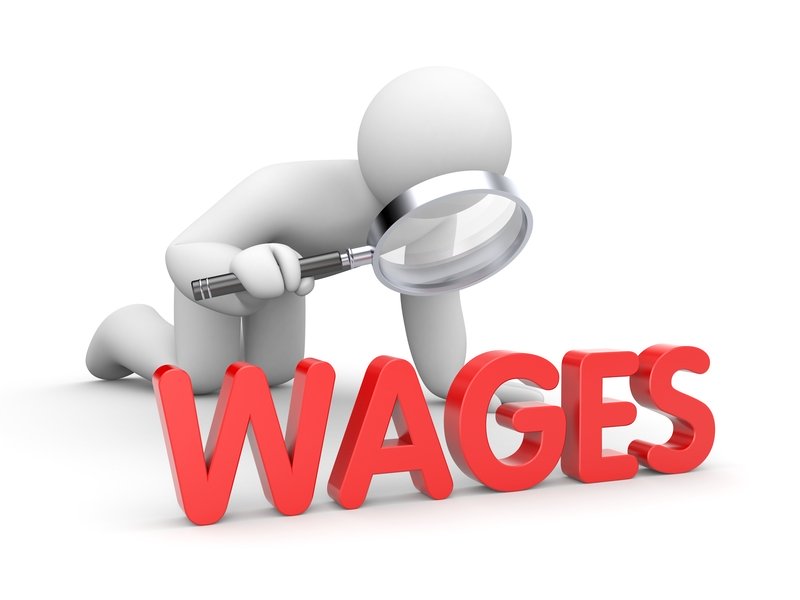- Home
- Canadian Bookkeeping Compliance Resource
- Payroll Tax Rates
Advertisement

Canadian Payroll Tax Rates
Payroll Tax Deduction Topics - Part 2

by L. Kenway BComm CPB Retired
Published July 2010 | Revised July 18, 2024 | Updated January 3, 2025
In this chat, you'll find information on current payroll tax rates that would be useful to Canadian small business owners and bookkeepers working from home. Make Bookkeeping-Essentials YOUR practical solutions RESOURCE for basic accounting help.
Quick Links
Have a cool glass of water with lemon while you browse through these payroll tax references.
- 2025 EI Rates includes information on EI for self-employed
- 2025 CPP Rates includes information on CPP2 YAMPE
- 2025 RRSP, TFSA and Defined Benefits Limits
- Hiring Credit for Small Business (2011-2013)
- Job Credit for Small Business (2015-2016)
- Good to Know ... How To Stop CPP Contributions
- Unclaimed Pay Cheques
- Statutory Holiday Payroll Tax Rates
- The Bookkeeping Forum Q&A Links Relating to Payroll
- Let's Chat About ... What is PIER?
- Let's Chat About ... How to Calculate CPP & EI Manually
- Let's Chat About ... CPP and EI Exclusions
- Let's Chat About ... How to Pay Employees with Cash
- Let's Chat About ... Employer Direct Deposit Rules
- Manual Payroll Journal Entries
Advertisement
Help getting all your ducks in a row
Canadian Payroll Series - Links will open on my sister site Bookkeeping-Essentials.ca
Payroll Tax Rates Has Moved
Sorry for the inconvenience. I am in the process of transitioning all the Canadian information to its own site - Bookkeeping-Essentials.ca . I've moved this section to the new site.
Click here to find who is excluded from paying CPP and EI premiums on my new sister site.
More On Payroll ...
Current CRA Payroll Deductions Tables
2012 Changes to CPP
Filing Deadlines and Due Dates
Latest CRA Information
Standby Charges
Current CRA Form TD1 Personal Tax Credits Return ... The latest form should be used by bookkeepers for all new employees or revisions to existing employees.
Good To Know
How To Stop CPP Contributions
Employees between 65-70 of age who are already receiving CPP benefits must file an election (Form CPT30 Election to Stop Contributing to the Canada Pension Plan, or Revocation of a Prior Election) with CRA if they do NOT want to continue making contributions.
Employees between 65-70 years old who have filed elections can revoke them ... but the revocation doesn't come into effect until the following calendar year.
Historical Canadian Payroll Tax Rates
Historical rates (1997 - 2024) for CPP and EI can be found on CRA's website (https://www.canada.ca/en/revenue-agency). The easiest place on the new website (which is really hard to navigate) is to go to the "All Rate" page and follow the links. The file path is Canada.ca> Canada Revenue Agency> Payroll> Calculate deductions and contributions> Canada Pension Plan (CPP) > What are the CPP contribution rates, maximums and exemptions? ... Canada.ca> Canada Revenue Agency> Payroll> Calculate deductions and contributions> Employment Insurance (EI) respectively.
Let's Chat About ...
How to Proof CPP and EI ... Payroll Tax Rates
In this day and age of computers, sometimes it is hard to know and understand how a number is calculated. Have you ever wanted to figure out your CPP and EI deductions by hand?
If you don't have a payroll program or service, and your payroll requirements are minimal, you can go to the CRA website and use their Payroll Deductions Online Calculator (PDOC). It will calculate the correct payroll tax rates for each employee.
Generally, here is how to calculate the employee and employer's portion for CPP and EI manually so you can spot check your overall payroll tax rates for CPP contributions and EI premiums. I like to do this when I first setup payroll to ensure I've done it correctly.
Remember, this is the calculation for a single payroll run. If you are proofing your full year, omit the "divide by the number of pay periods in the year" part of the calculation.
Calculation of payroll tax rates for CPP contributions - The gross payroll less the basic exemption ($3500 per employee divided by the number of pay periods in the year) times the CPP contribution rate of 4.95% (2016) equals the CPP premium (employee portion). The employer portion is equal to the employee contributions.
For example: Gross Pay of $2,500 - ($3,500 / 24 pay periods = $145.83) x 4.95% = $116.53 employee CPP contribution + $116.53 CPP employer portions = $233.06 total CPP contribution remittance due to CRA for this one employee.
| Year | CPP Maximum Contribution Per Employee |
CPP Maximum Pensionable Earnings Per Employee |
CPP Basic Exemption Per Employee |
CPP Contri- bution Rate |
CPP Employer Portion |
|---|---|---|---|---|---|
| 2017 | 2,564.10 | 55,300 | 3,500 | 4.95% | match |
| 2016 | 2,544.30 | 54,900 | 3,500 | 4.95% | match |
| 2015 | 2,479.95 | 53,600 | 3,500 | 4.95% | match |
| 2014 | 2,425.50 | 52,500 | 3,500 | 4.95% | match |
| 2013 | 2,356.20 | 51,100 | 3,500 | 4.95% | match |
| 2012 | 2,306.70 | 50,100 | 3,500 | 4.95% | match |
| 2011 | 2,217.60 | 48,300 | 3,500 | 4.95% | match |
| 2010 | 2,163.15 | 47,200 | 3,500 | 4.95% | match |
| 2009 | 2,118.60 | 46,300 | 3,500 | 4.95% | match |
| 2008 | 2,049.30 | 44,900 | 3,500 | 4.95% | match |
Calculation of payroll tax rates for EI premiums - The gross payroll times the EI premium rate of 1.63% (2017) equals the EI premium (employee portion). The employer portion is 1.4 times the employee premiums. Note there is no basic exemption for EI premiums.
For example: Gross Pay of $2,500 x 1.63% = $40.75 employee EI premium + ($40.75 x 1.4 EI employer portion) = $97.80 total EI premium remittance due to CRA for this one employee.
| Year | EI Maximum Premiums Per Employee |
EI Maximum Insurable Earnings Per Employee |
EI Basic Exemption Per Employee |
EI Premium Rate | EI Employer Portion |
|---|---|---|---|---|---|
| 2017 | 836.19 | 51,300 | nil | 1.63% | 1.4 times |
| 2016 | 955.04 | 50,800 | nil | 1.88% | 1.4 times |
| 2015 | 930.60 | 49,500 | nil | 1.88% | 1.4 times |
| 2014 | 913.68 | 48,600 | nil | 1.88% | 1.4 times |
| 2013 | 891.12 | 47,400 | nil | 1.88% | 1.4 times |
| 2012 | 839.97 | 45,900 | nil | 1.83% | 1.4 times |
| 2011 | 786.76 | 44,200 | nil | 1.78% | 1.4 times |
| 2010 | 747.36 | 43,200 | nil | 1.73% | 1.4 times |
| 2009 | 731.79 | 42,300 | nil | 1.73% | 1.4 times |
| 2008 | 711.03 | 41,100 | nil | 1.73% | 1.4 times |
Now you can quickly verify that your payroll taxes were calculated using the proper payroll tax rates.
Employees who have over payments to EI and CPP in the year receive a refund when they file their annual personal tax return.
Overpayments can happen if an employee has more than one job or retires during the year. The employer portion of the overpayment is NOT refundable.
You will want to check the CRA payroll tables each year to determine the maximum pensionable / insurable earnings, the contribution/premium rates and maximum contributions / premiums.
2025 RRSP and Defined Benefit Limits
Rates Used to Calculate PA, PSPA, PAR
Following are the limits for 2025 (2024) with regards RRSP and defined benefit limits:
- MP limit - $33,810 in 2025 ($32,490 in 2024) restricted to 18% of compensation for PA purposes
- RRSP limit - $32,490 in 2025 ($31,560 in 2024). It will be $33,810 in 2026.
- DPSP limit is half of the MP limit and restricted to 18% of compensation for PA purposes - $16,905 in 2025 ($16,245 in 2024).
- YMPE limit (CPP1) - $71,300 in 2025 ($68,500 in 2024)
- YAMPE limit (CCP2) - $81,200 in 2025 ($73,200 in 2024)
- Defined benefit limit - $3,756.67 in 2025 [1/9 of the MP limit for 2026] ($3,610.00 in 2024)
- TFSA limit - $7,000 in 2025 ($7,000 in 2024)
The 2026 RRSP limit will be the prior year's MP limit - $33,810.
Historical rates back to 1990 can be found on CRA's website (canada.ca/en/revenue-agency). The new website is really hard to navigate but I found the easiest way to find what you are looking for is to search for the "All Rate" page and follow the link called MP, DB, RRSP, DPSP, and TFSA limits and YMPE".
Acronyms Index and Definitions:
- PA - Pension adjustment ensures that all taxpayers at comparable income
levels will have access to comparable tax assistance, regardless of the
type of plan to which they belong. It is limited to 18% of earned income.
- PSPA - Past service pension adjustment ensures benefit upgrades and past service purchases to defined benefit pension plans are charged against the 18% limit. As past service event is broadly defined as any transaction, event or circumstance that causes a member's post-1989 benefits to increase.
- PAR - Pension adjustment reversal is used to restore an individual's RRSP room when a member terminates their membership in a benefit provision of a registered pension plan or deferred profit sharing plan (DPSP).
- MP - Money purchase is an RPP. Unlike defined benefit plans, MPPs shift the risk of the retirement income level to the employee instead of the employer.
- RPP - Retirement pension plan is an arrangement by an employer or a union to provide pensions to retired employees in the form of periodic payments.
- RRSP - Registered retirement savings plan allows tax deferral on contributions until retirement income commences. Earnings in the plan remain tax-free and payments out of an RRSP are taxable on receipt.
- DPSP - Deferred profit sharing plan is an arrangement under which an employer may share profits from their business with all or a designated group of employees to provide pensions.
- YMPE - Year's maximum pensionable earnings is set by the government. It is the amount used in calculating annual CPP1 contributions.
- YAMPE - Year's additional maximum pensionable earnings is set by the government. It is the amount used in calculating annual CPP2 contributions.
- TFSA - Tax free savings account
Source: CRA website
Let's Chat About ...
What is PIER? ... And What To Do If You Get One
PIER stands for Pensionable and Insurable Earnings Review. It is a review CRA performs every year on T4 slips and T4 summaries submitted. They examine whether the correct payroll tax rates were used in your source deductions, and if remittances and reporting were adequate.
If you receive a PIER report (usually sometime during the summer), CRA has found a payroll tax rate deficiency in your records for the year under review. OOPS! The report comes with detailed instructions on how to proceed.
Here are two references on the CRA website that should help you deal with any CPP or EI under/over payments ... as you cannot recover shortfalls by adjusting the employee's income tax deductions.
A to Z index> Payroll> C> CPP ... Overpayment (includes information on recoveries as well)
A to Z index> Payroll> E> EI, Employment Insurance> EI overpayment and recovering EI premiums
If you are looking for more information on PIER reports, here is your reference:
A to Z index> Payroll> P> PIER-Employment Insurance (EI)
Statutory Holiday Payroll Tax Rates

To determine the pay rates for statutory holidays, refer to your provincial labour standards if you are under provincial regulations ... or federal labour standards for those under federal jurisdiction.
For BC, here are the links to the BC Ministry of Labour Statutory Holidays ...
https://www2.gov.bc.ca/gov/content/employment-business/employment-standards-advice/employment-standards/statutory-holidays
https://www2.gov.bc.ca/gov/content/employment-business/employment-standards-advice/employment-standards/statutory-holidays/calculate-statutory-holiday-pay
The Tax Detective blog on November 19, 2010 mentions that in B.C., "if a stat holiday falls on a regular day off, an eligible employee is to be paid an average day's pay, but the employer isn't required to give the employee another day off. Unless you have a very generous employer, don't expect to be paid for the statutory holidays and to get a day off in lieu, it will be one or the other, not both."
It should also be noted that Easter Sunday, Easter Monday, and Boxing Day are not a statutory holidays in B.C.
For Alberta ...
alberta.ca/general-holidays-pay.aspx
For Ontario ...
ontario.ca/document/your-guide-employment-standards-act-0/public-holidays
For federal standards and all other provinces / territories, try this link ...
canada.ca/en/employment-social-development/programs/employment-standards/holidays.html
Let's Chat About ...
Who is excluded from paying CPP and EI premiums?
Sorry for the inconvenience. I am in the process of transitioning all the Canadian information to its own site - Bookkeeping-Essentials.ca . I've moved this section to the new site.
Click here to find who is excluded from paying CPP and EI premiums on my new sister site.
Let's Chat About ...
How to Pay Employees with Cash
Egads, this chat has moved. You'll find it here ... So sorry about that!
Let's Chat About ...
Employer Direct Deposit Rules

PaySavvy posted a great blog on the various direct deposit rules for employers across Canada. As you peruse the blog, you will notice that each province/territory is similar but different.
Generally, payroll direct deposits must be paid into the employee's account NOT third party accounts and side deals are illegal.
While it is important to be knowledgeable of and in compliance with the current payroll tax rates ... being aware of the Employment Standards Act in your province ... which includes the rules around payroll direct deposits ... is critical for employers.
Information Source: PaySavvy Blog June 27, 2013 The Shocking Truth About Paying Employees Via Direct Deposit (You Probably Didn't Know About) by James Plett
This concludes my notes on payroll tax rates for Canadian bookkeepers. If you would like me to present any other information, please drop me a line.




